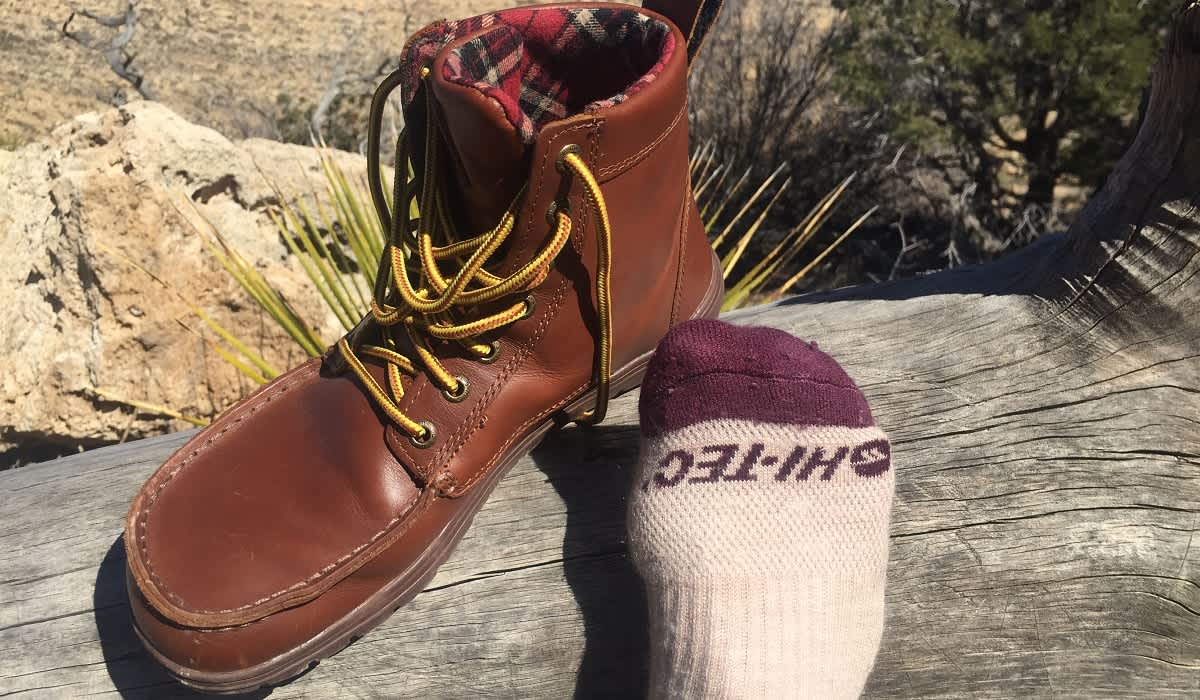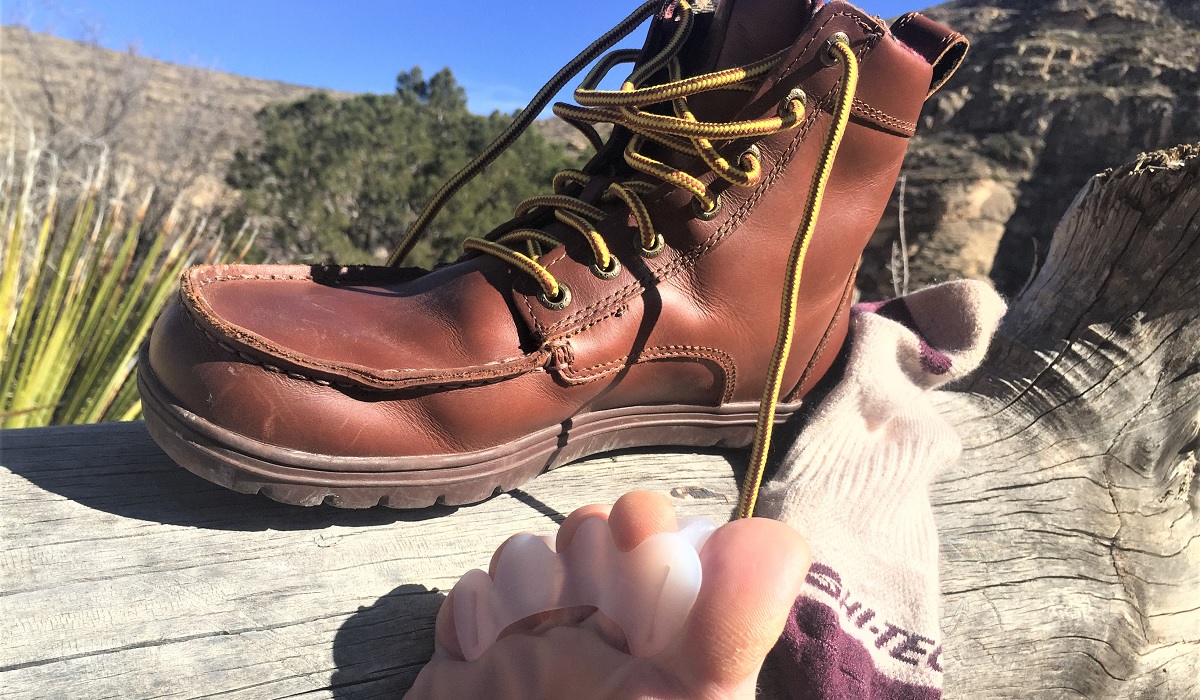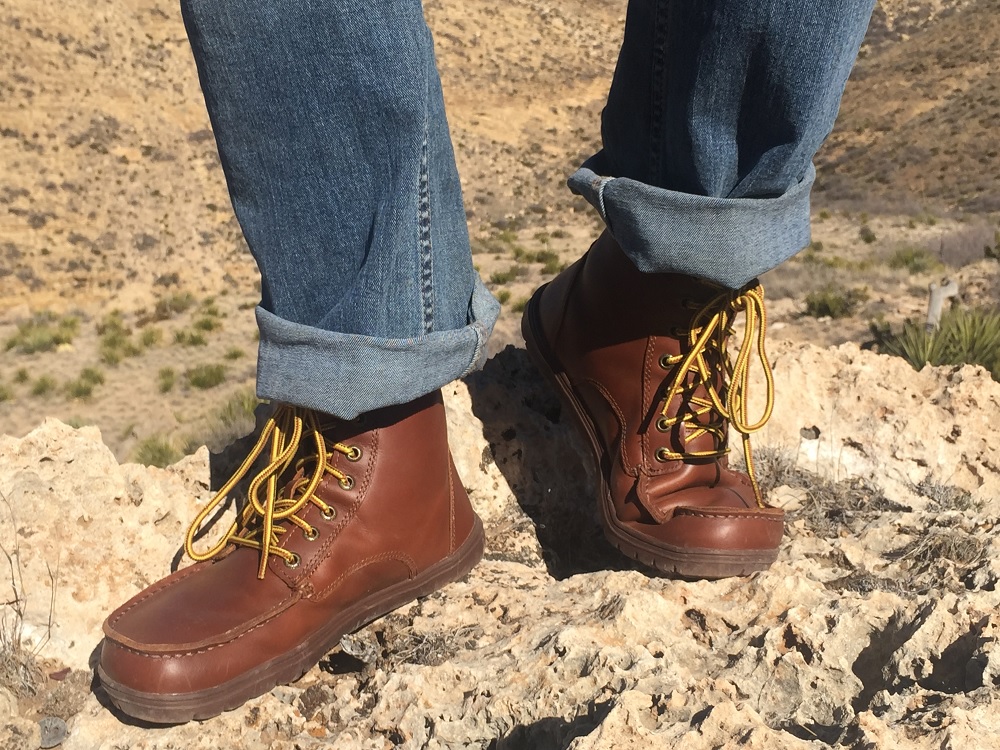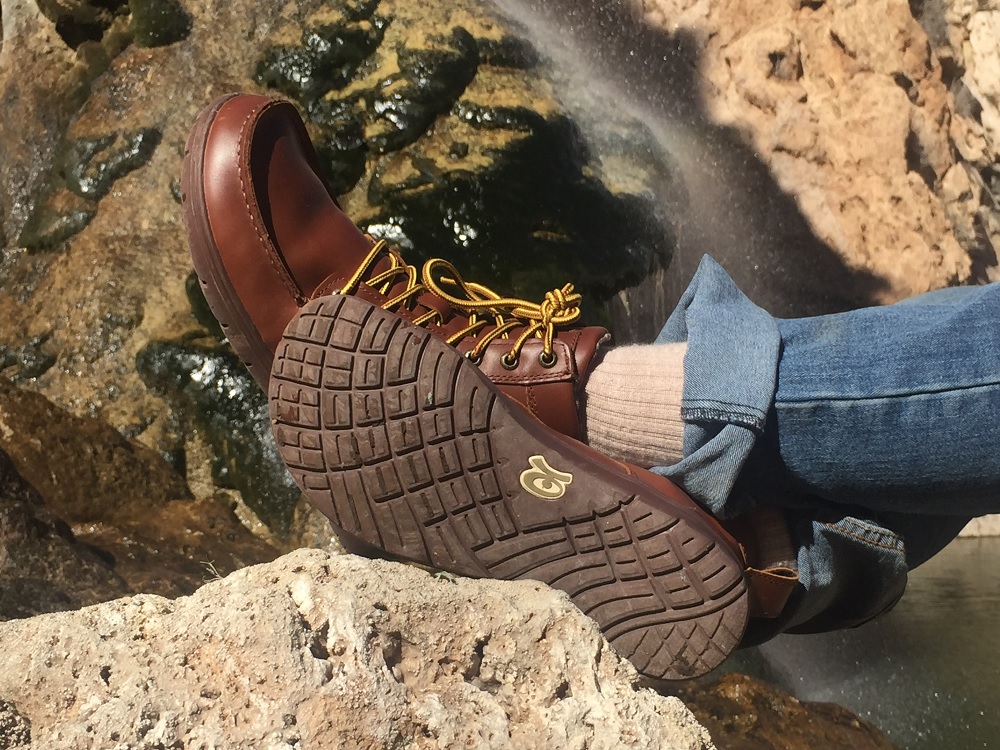Happy Hiking: How I Tamed Agony of De Feet with CorrectToes
Eve Flanigan 02.20.20

Foot pain – along with ankle, knee, hip, and lumbar issues that can occur as a consequence of compensating for it – is a common affliction. For people who love the outdoors, foot maladies can, at least, decrease enjoyment of excursions. At its worst, both acute and chronic foot pain can separate a person from the outdoor pursuits they love, with hiking, trail running, and hunting being at the top of the list.
As someone who once entered every 5K in the area and drove to other states for obstacle/mud runs and run & gun competitions, it was a hard transition when foot pain, in the form of ugly bunions, plus knee pain forced me to decrease and finally desist from running. My heart yearns for those post-run highs and the way happy thoughts and new ideas volunteered themselves in my runner’s state of mind, cleared of normal chatter by the simple task of keeping a pace and putting one foot in front of the other.
After I stopped running, my feet stopped waking me up at night but didn’t heal. Bunion pain still happened after long walks and hikes, even after an imbalanced step. The dexterity I once enjoyed on rocky ground began to suffer, thanks to the survival habit of angling my feet so as to avoid weighting the base of the “big toes,” or great toes, where the pain liked to recur at the end of a long day on foot.
Despite that, and perhaps against better judgment, I entered a 5.8-mile run & gun competition this winter. The Westex Run & Gun is held on a historic Texas ranch with one steep and rocky hillside. Though I completed the event on a score that I’m not at all proud of, I am glad to have done it, because the sight of my own foot when I took my shoes off after the event was alarming enough to cause me to do the research that began a surgery-free healing process. Within a few days of acting on this new information, I experienced pain relief and visibly apparent restoration of my feet that I would not have thought possible.
While it can be tiresome to hear about physical ailments, I share this story in hopes that others who experience foot pain can also experience the same relatively fast and inexpensive fix and get back to enjoying the great outdoors.
I stumbled upon the online presence of sports podiatrist Dr. Ray McClanahan. There, in the site’s library of videos and reading material, I learned my foot pain isn’t from feet per se, but shoes. McClanahan, a great teacher, uses several methods to gently introduce the fact that wearing shoes that are narrower in the front than at the base of the toes is nothing more than a bizarre and dysfunctional cultural phenomenon. (I, on the other hand, tend to err on the pithy side). Starting around age 1, our feet are forced into shoes that prevent toes from being in their normal position, each straight and in line with its corresponding metatarsal bone that can be felt on top of the foot.
Instead of straight, aligned-with metatarsal toes, we get trouble. Bunions, hammertoes, toes that rub together, plantar fascia pain; the list goes on. Transition out of torturous (yet common) shoes, says McClanahan, and invest in a set of CorrectToes toe straighteners made for wearing during exercise, and get well.
It seemed too simple to be true – but too sensible to be wrong. McClanahan has plenty of stories from professional athlete patients who have made recoveries after unsuccessful foot surgeries using his method. But what hooked me on the concept was the way my foot problems were described in his many educational videos. Of course they’re made for anyone, but it seemed as if the bunion videos were written just for me. The description of the progression of pain and disability was eerily accurate. I also learned flat feet are not the disability they’re painted to be. Since that also describes me, I became deeply interested in the program.
The flagship product of CorrectToes goes by that same name. These toe spacers/straighteners are made of what is said to be medical-grade silicone. Unlike similar products on the market, they’re made to be worn while being active, and can be trimmed for a custom fit. At $65, they’re not cheap, at least not until one compares them to foot surgery.

CorrectToes are made to be worn barefoot or inside footwear. But that gives rise to a new issue—it was a lifetime of wearing shoes that are narrower at the toes than at the ball of the foot that caused my problem in the first place. Not to worry, the good doctor has many videos about picking foot-healing, foot-friendly shoes and boots. There are three overall recommendations:
- Generous toe box
Remove the footbed liner from any shoe or boot or, less preferably, alight your bare foot on the sole of the opposite shoe. If the toes exceed the outline of the liner or sole by more than 1mm, it’s too narrow.
- Zero drop from heel to toe
In shoes that have any height difference from heel to toe, the forefoot is forced to bear the entire weight of the body. Even for men, whose footwear doesn’t normally include high heels, this causes damage over time. McClananhan recommends a gradual transition from heeled to flat footwear as well as plenty of barefoot time to accustom the whole foot to bearing weight.
- Flexible soles
Feet were meant to flex and interact with the ground. Stiff-soled hiking boots and similar footwear contribute to the breakdown of foot capabilities by insulating feet from stimulation, both in terms of flexion and “prioperception,” or the foot’s ability to interact with the ground using optimum balance.

There aren’t many hiking or duty boots offered in this footwear category known as minimalist. I found a deal on Lems Shoes leather Boulder Boot, though, and ordered a pair days after starting to wear CorrectToes, which were impossible to wear in my old shoes.
The combination of wearing the CorrectToes appliance as often as I possibly can (although the official recommendation is to start slow), in addition to the Boulder boots staying out of their way when I must wear shoes, yielded almost instant relief and the beginning of a surprising re-formation of my battered feet. The throbbing bunion pain I once felt daily is no longer an everyday or lengthy experience. My physician-diagnosed flat feet are beginning to have arches that I can see as well as flex like any other muscle.
It was time for a two-day test of the new system. On Saturday, it would be a steep but short, 2.5-mile hike to New Mexico’s Sitting Bull Falls with CorrectToes, Boulder boots, and Hi-Tec socks. The next day, I spent 10 hours in the same setup, but with Farm To Feet tactical socks, at the shooting range.

Being in motion at Sitting Bull Falls was the easier of the two—in fact, it was a delight not only to be hiking but to feel the increased capabilities of my own feet in flexible-soled boots. At the end of day two, which entailed a lot of standing on hard ground, my feet weren’t as fatigued as they normally are in thick-soled duty boots with a slight heel drop. However, the tops of the CorrectToes had begun to irritate my feet. There were no blisters at the end of the day, but I’ve decided for now, six to eight hours of range work is the max when wearing them.
The excellent socks in this article were sponsored gear. The rest was purchased at my own expense out of a desire to end agonizing foot pain. I share this story in hopes someone else can enhance their own enjoyment of the outdoors by healing footwear-induced pain.

